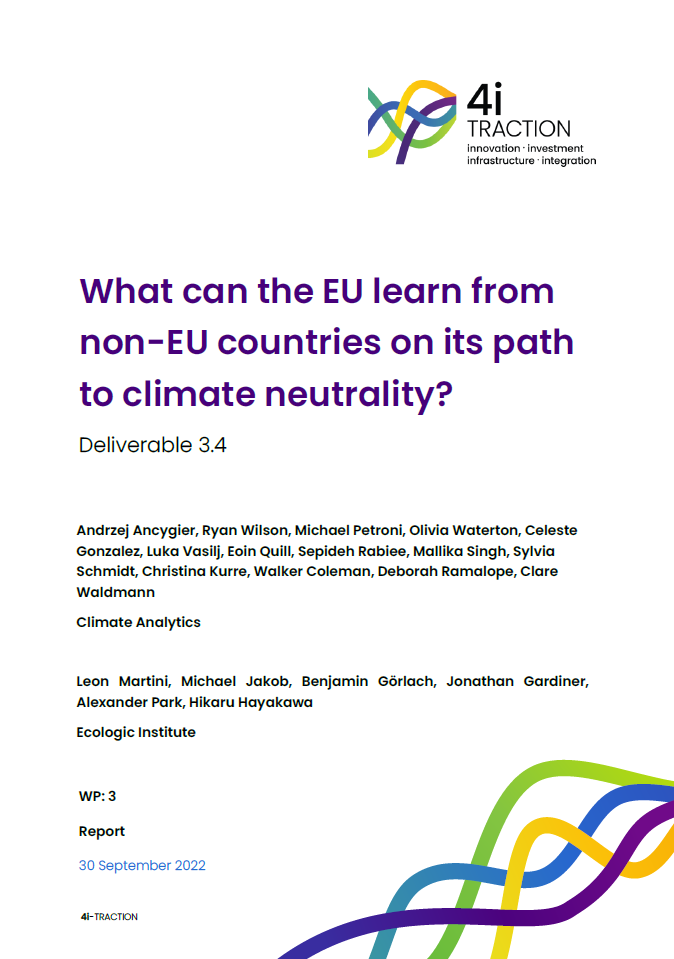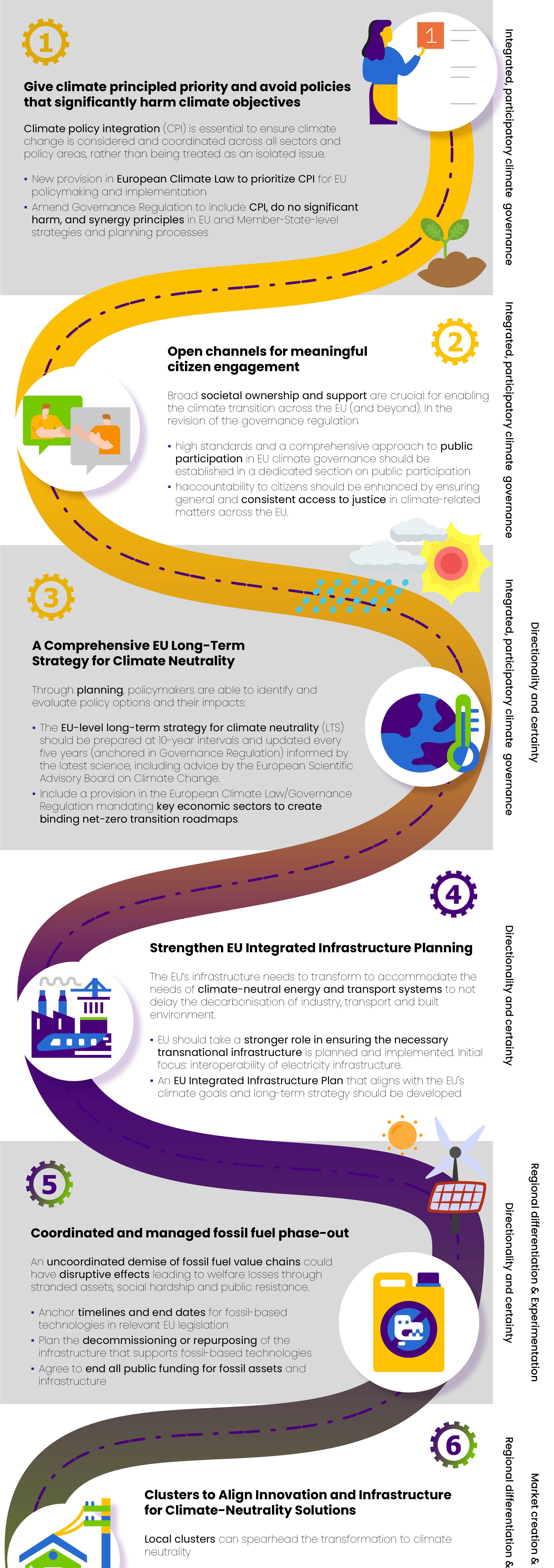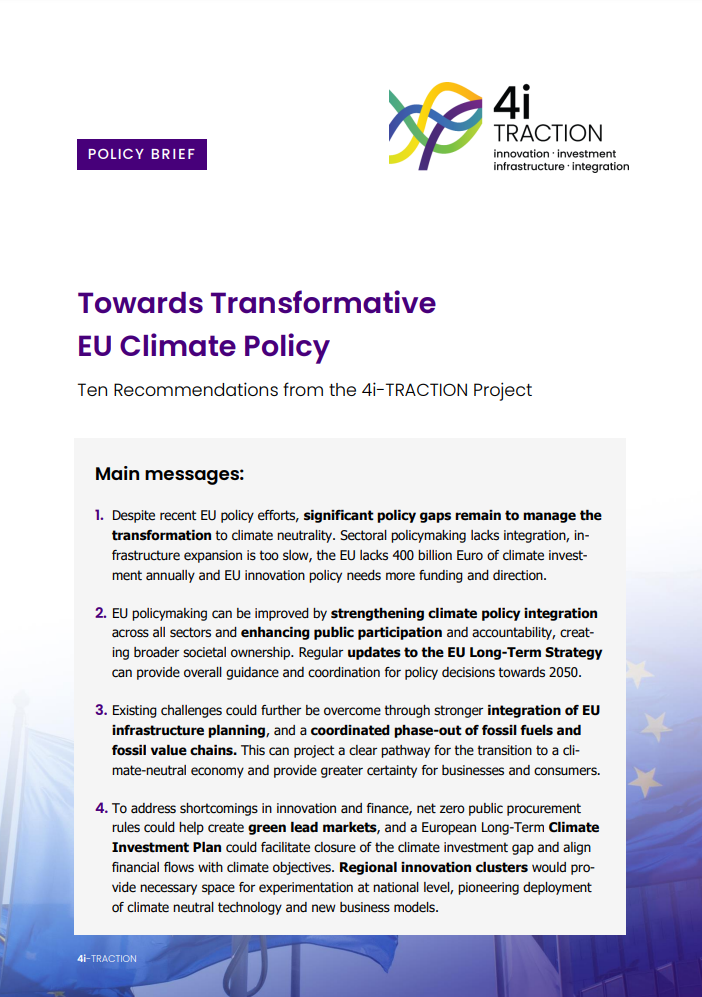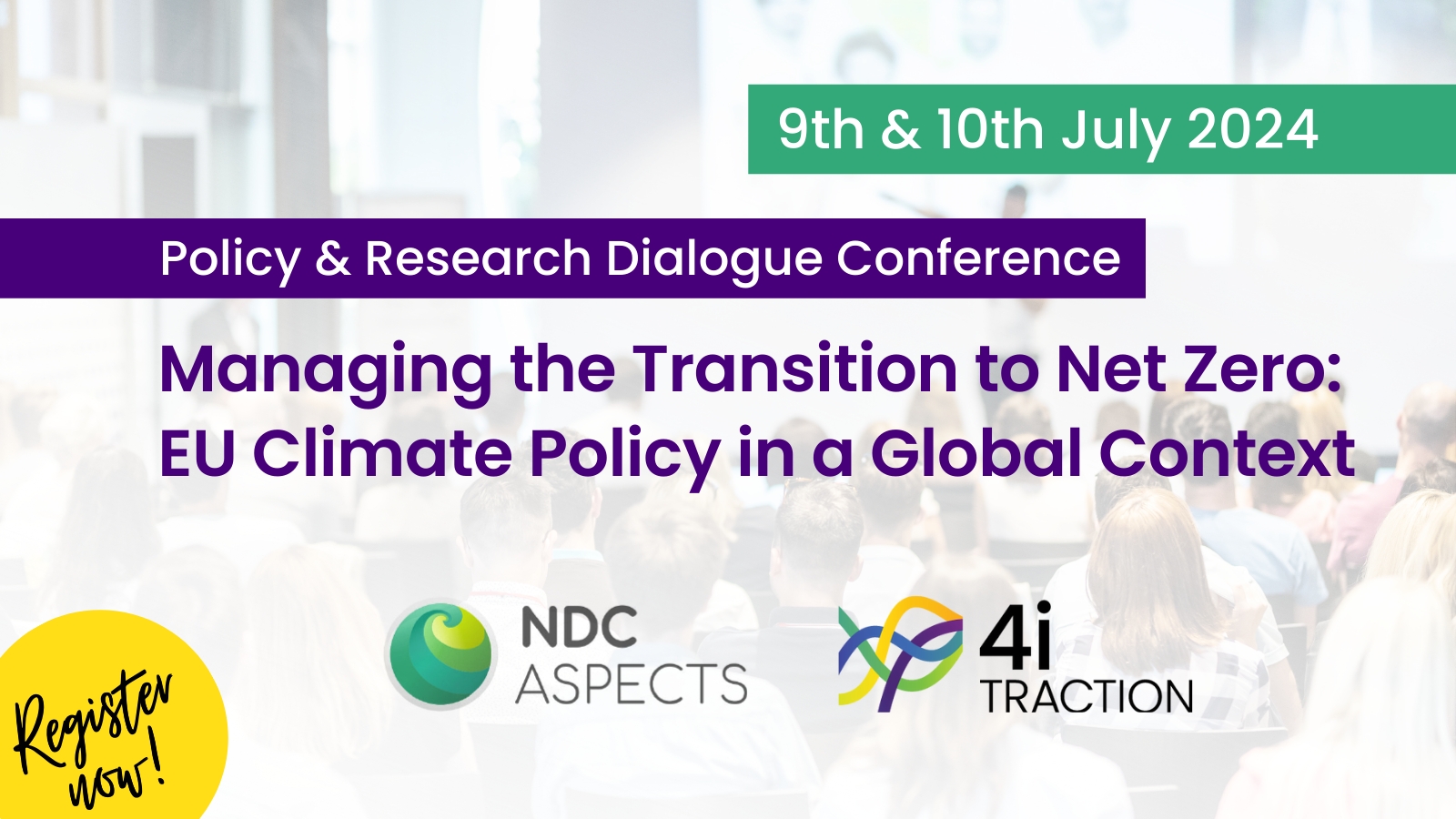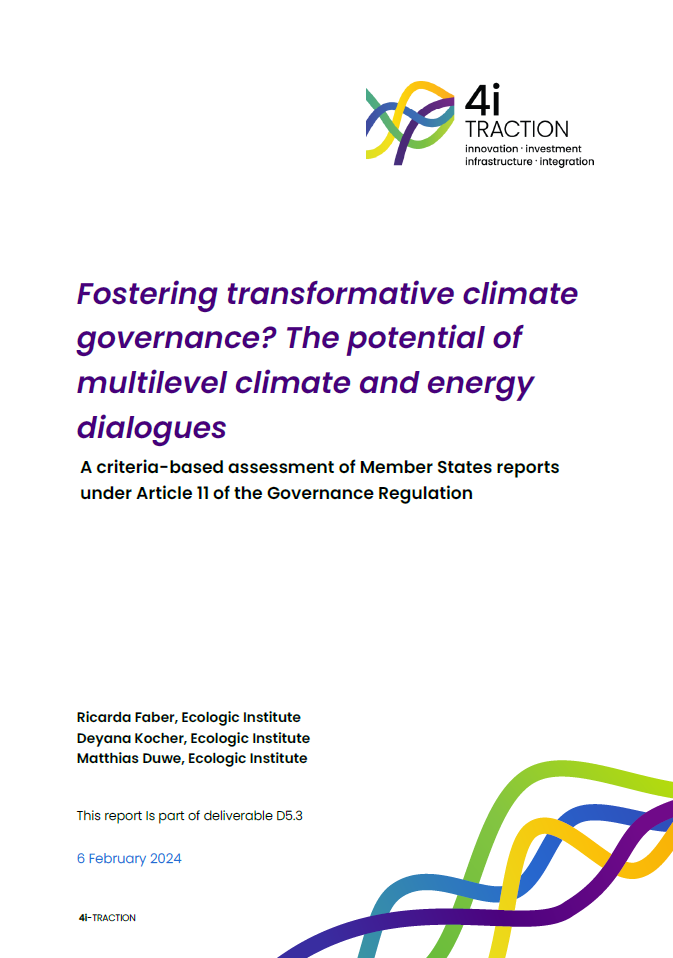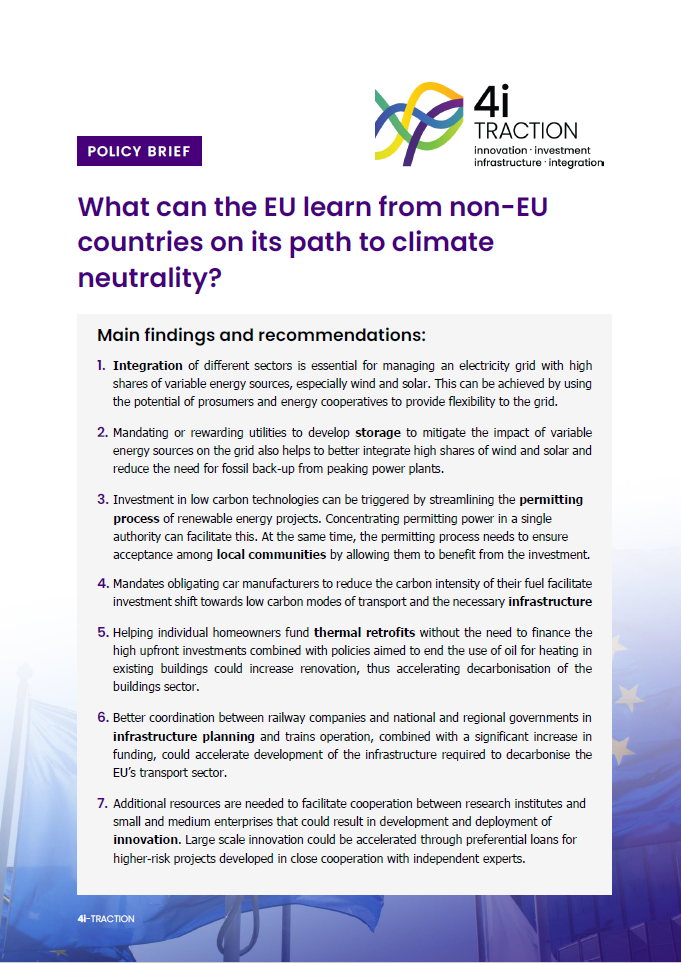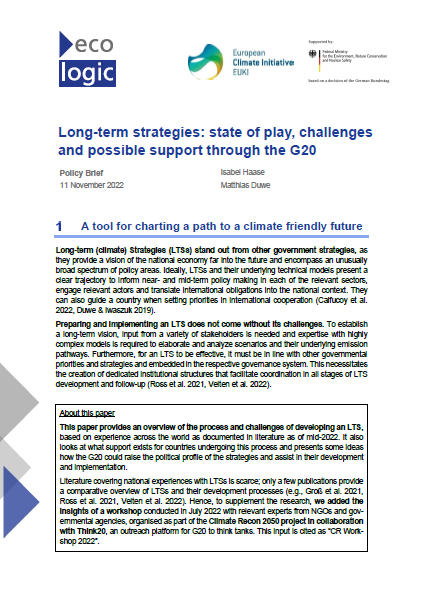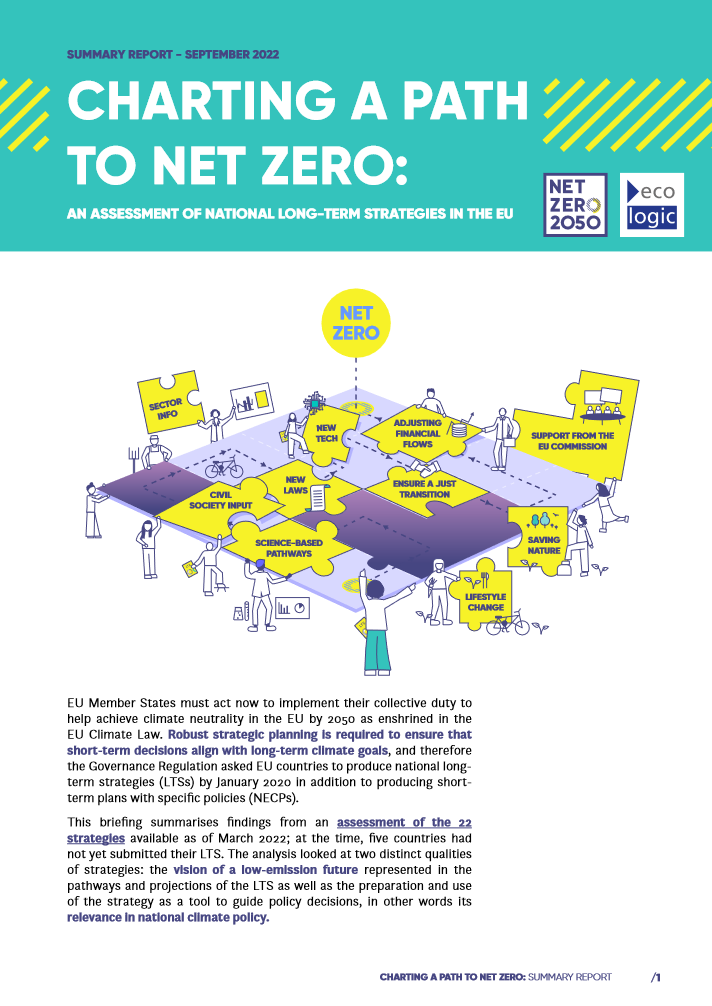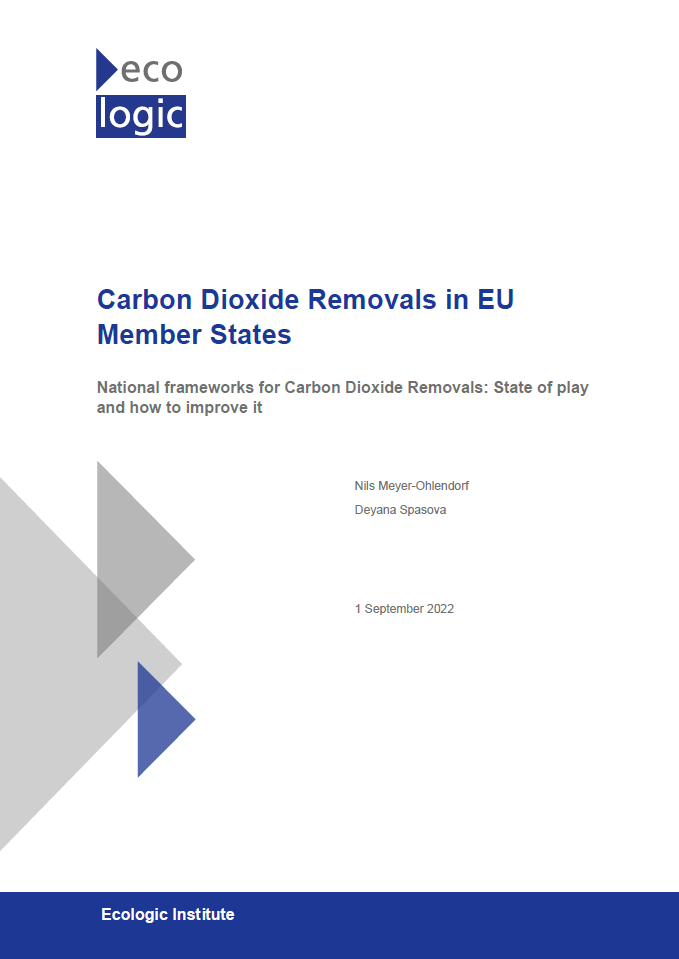What Can the EU Learn from Non-EU Countries on its Path to Climate Neutrality?
- Publication
- Citation
A Ancygier, D Ramalope, C Waldmann, R Wilson, O Waterton, M Petroni, L Vasilj, E Quill, S Rabiee, M Singh, S Schmidt, W Coleman, L Martini, M Jakob, B Görlach, J Gardiner, A Park, H Hayakawa (2022): What can the EU learn from non-EU countries on its path to climate neutrality? 4i-TRACTION Deliverable D 3.4. Climate Analytics, Ecologic Institute; Berlin
This research report presents case study results of selected climate policies in non-EU countries. Based on the analysis, it develops recommendations how the experience of other countries can inform EU policymaking.
While the EU has set itself ambitious targets, there is a large implementation gap in many areas. Studying the successful implementation of climate policies in other countries may inform and improve EU policy-making and help address these implementation gaps. This assessment investigates several case studies from different countries and regions, spread across eight archetypes: electricity markets, innovation, phase-out of fossil fuels, electricity storage, railways development, passenger road transport, and efficiency in buildings.
The case studies and arguments around these archetypes are linked accordingly to one of four thematic areas: investment, innovation, integration, and infrastructure, which represent key challenges that the EU will need to address on its pathway to a net-zero emissions target. The assessment shows that the diversity of experience faced by countries offers valuable insights into how policy developments have been successful and what the EU can learn from them.
The key lessons from the case studies are summarised in a policy brief.
Contact
- Language
-
English
- Authorship
-
Andrzej Ancygier, Ryan Wilson, Michael Petroni, Olivia Waterton, Celeste Gonzalez, Luka Vasilj, Eoin Quill, Sepideh Rabiee, Mallika Singh, Sylvia Schmidt, Christina Kurre, Walker Coleman, Deborah Ramalope, Clare Waldmann (Climate Analytics)
- Funding
-
European Commission, Directorate-General Research & Innovation (DG Research & Innovation), International - Published by
-
Climate Analytics GmbH, Germany Ecologic Institute, Germany - Year
- Dimension
- 442 pp.
- Project
- Project ID
- Table of contents
-
Click to show full table of contents
Executive Summary
1. Methodological basis
1.1 Introduction and background
1.2 General considerations
1.2.1 Selecting good practices and identifying good practices
1.2.2 The archetypes approach
1.2.3 Conceptual frameworks
1.3 Case study design
1.3.1 Context and background
1.3.2 Description of specific policies and their effects
1.3.3 Lessons for EU
1.4 Synthesising case studies
1.5 Limitations
2. Archetype 1: Decentralisation of the Electricity Sector
2.1 Introduction
2.2 Why consider electricity market design and community batteries?
2.3 Case Study 1: Australia’s Virtual Power Plant (VPP)
2.3.1 Context and background
2.3.2 Policy gap addressed
2.3.3 Description of the policy
2.3.4 Description of policy
2.3.5 Evaluation of policy and its effects
2.3.6 Current and future trends
2.3.7 Discussion
2.4 Case study 2: Community batteries
2.4.1 Context and background
2.4.2 Leading the way: trialling community batteries
2.4.3 Recent updates to the regulatory environment
2.4.4 Political support at the national level
2.4.5 Policy Assessment
2.4.6 Discussion
2.5 Lessons for the European Union
2.5.1 Empowering prosumers
2.5.2 Community energy
2.5.3 Establishing an EU ‘Regulatory Sandbox’ framework
2.6 Conclusion
3. Archetype 2: Innovation
3.1 Introduction
3.2 Why consider an improvement of the European innovation framework
3.3 Case study 1: Department of Energy Loan Program
3.3.1 Context and Background
3.3.2 Energy Loan Program
3.3.3 Policy changes
3.3.4 Policy implementation
3.3.5 Policy evaluation
3.3.6 Discussion
3.4 Case study 2: Small Business Innovation Research programme (SBIR)
3.4.1 Context and Background
3.4.2 Policy Development
3.4.3 The role of the Small Business Administration
3.4.4 Policy Implementation
3.4.5 Policy Evaluation
3.4.6 Discussion
3.5 Case study 3: Small Business Technology Transfer (STTR)
3.5.1 Context and Background
3.5.2 Phases and structure of the STTR programme
3.5.3 The role of the Small Business Administration
3.5.4 Differences between SBIR and STTR programmes
3.5.5 Policy implementation
3.5.6 Policy evaluation
3.5.7 Criticism of STTR
3.5.8 Discussion
3.6 Lessons for the European Union
3.7 Conclusion
4. Archetype 3: Policy driven fossil fuel phase-out in heating and transport (exnovation)
4.1 Introduction
4.1.1 State of decarbonisation in the EU building sector
4.1.2 State of decarbonisation in the EU road transport sector
4.2 Why consider phasing out fossil fuels in Norway and Canada?
4.3 Case Study 1: Phasing out fossil fuels in heating – Norway
4.3.1 Context and background
4.3.2 Ban on the use of oil for heating buildings from 2020
4.3.3 Transition indicators and cost of ownership comparisons
4.3.4 Policy evaluation
4.3.5 Discussion
4.4 Case study 2: Phasing out fossil fuels in heating – Vancouver, Canada
4.4.1 Context and background
4.4.2 Low emission requirements for space heating 2022
4.4.3 Enabling conditions
4.4.4 Discussion
4.5 Case study 3: Norway internal combustion engine vehicle phase-out
4.5.1 Context and background
4.5.2 The 2025 ICEV phase-out target
4.5.3 Policy evaluation
4.5.4 Discussion
4.6 Lessons for the European Union
4.7 Conclusion
5. Archetype 4: Driving storage
5.1 Introduction
5.2 Why consider procurement mandates and Renewable Energy Certificates?
5.3 Case study 1: Storage procurement mandate (California)
5.3.1 Context and background
5.3.2 The early days of California’s storage procurement mandate
5.3.3 Implementation of AB 2514
5.3.4 Updates to the regulatory environment since AB 2514
5.3.5 Evaluating California’s storage procurement mandate
5.3.6 Discussion
5.4 Case study 2: Renewable Energy Certificates (South Korea)
5.4.1 Context and background
5.4.2 Window of opportunity
5.4.3 Policy development
5.4.4 Policy evaluation
5.4.5 Discussion
5.5 Lessons for the European Union
5.6 Conclusions
6. Archetype 5: Railways
6.1 Introduction
6.2 Why consider alternatives to current EU railway policy?
6.3 Case study 1: Railways in Japan
6.3.1 Context and background
6.3.2 Policy development
6.3.3 After privatisation
6.3.4 Funding
6.3.5 Infrastructure development
6.3.6 Policy evaluation
6.3.7 Discussion
6.4 Case study 2: Railways in Switzerland
6.4.1 Context and background
6.4.2 Policy framework
6.4.3 Rail 2000
6.4.4 Infrastructure development
6.4.5 Funding of railways development
6.4.6 Reducing road transport
6.4.7 Decentralisation
6.4.8 European legislation
6.4.9 Policy evaluation
6.4.10 Discussion
6.5 Lessons for the European Union
6.6 Conclusions
7. Archetype 6: Renewables
7.1 Introduction
7.2 Why consider permitting and Renewable Energy Zones?
7.3 Why consider Renewable Energy Zones?
7.4 Case study 1: Wind power permitting in Norway
7.4.1 Context and background
7.4.2 Description of permitting in Norway
7.4.3 Proposed changes to the Norwegian permitting system
7.4.4 Evaluating Norway’s permitting system
7.4.5 Discussion
7.5 Case study 2: Renewable Energy Zones in Australia
7.5.1 Context and background
7.5.2 Development of Renewable Energy Zones in Australia on the national level
7.5.3 Renewable Energy Zones in New South Wales
7.5.4 Challenges for the development of REZs
7.5.5 Discussion
7.6 Lessons for the European Union
7.7 Conclusions
8. Archetype 7: Decarbonisation of passenger cars
8.1 Introduction
8.2 Why consider alternatives to the existing policy framework for passenger cars?
8.3 Case study 1: Low-carbon fuel standard in California
8.3.1 Context and background
8.3.2 Policy framework for the decarbonisation of passenger vehicles
8.3.3 Implementation of the 2007 Low-Carbon Fuel Standard
8.3.4 Subsequent updates to the LCFS
8.3.5 Evaluating the LCFS’s impact
8.3.6 Discussion
8.4 Case study 2: Dual credit policy in China
8.4.1 Context and background
8.4.2 Policy Development
8.4.3 Evaluation of the Dual Credit Policy
8.4.4 Discussion
8.5 Lessons for the European Union
8.6 Conclusions
9. Archetype 8: Decarbonisation of the building sector
9.1 Introduction
9.2 Why consider PACE and the Ithaca Green New Deal as case studies?
9.3 Case study 1: Property Assessed Clean Energy (PACE)
9.3.1 Context and background
9.3.2 The main drivers for the introduction of the PACE scheme
9.3.3 Evaluating PACE programme’s impact
9.3.4 Discussion
9.4 Case study 2: the Ithaca Green New Deal programme
9.4.1 Context and background
9.4.2 Policy development
9.4.3 Evaluating Ithaca’s renovation push
9.4.4 Discussion
9.5 Lessons for the European Union
9.6 Conclusion
10. Conclusions
10.1 Stimulating innovation
10.2 Infrastructure for a resilient, climate-neutral economy
10.3 Shifting investment and finance
10.4 Achieving integration of different sectors
10.5 The EU’s “Man on the Moon” moment
11. Appendix – Other Renewable Energy Zones - Keywords
4i-TRACTION (2022): What can the EU learn from non-EU countries on its path to climate neutrality? 4i-TRACTION Policy Brief. Climate Analytics, Berlin.
Haase, Isabel; Duwe, Matthias (2022): Long-term strategies in a G20 context. Ecologic Institute, Berlin.
Velten, Eike Karola, Nick Evans, Deyana Spasova, Matthias Duwe, Ramiro de la Vega, Laurens Duin, and Harrison Branner (2022): Charting a path to net zero: An assessment of national long-term strategies in the EU. Ecologic Institute, Berlin.
Velten, Eike Karola, Duwe, Matthias, Evans, Nick (2022): Charting a path to net zero: An assessment of national long-term strategies in the EU. Summary. Ecologic Institute, Berlin.
Meyer-Ohlendorf, Nils, Deyana Spasova (2022): Carbon Dioxide Removals in EU Member States. Ecologic Institute, Berlin.
Agora Industrie, FutureCamp, Wuppertal Institut und Ecologic Institut (2022): Klimaschutzverträge für die Industrietransformation. Aktualisierte Analyse zur Stahlbranche.
